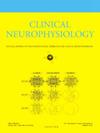Electrophysiological findings in immune checkpoint inhibitor-related neuromuscular events
IF 3.6
3区 医学
Q1 CLINICAL NEUROLOGY
引用次数: 0
Abstract
Introduction
Immune checkpoint inhibitors (ICIs) have become key therapies for various malignancies by restoring antitumor immunity. However, they may trigger immune-related adverse events (irAEs), including neurological irAEs (n-irAEs), which, though rare, can be severe. Among these, neuromuscular disorders affecting peripheral nerves, the neuromuscular junction (NMJ), and muscle are the most frequent and carry the highest mortality risk, warranting prompt recognition.
Objective
To describe the clinical and electrodiagnostic features of ICI-related neuromuscular disorders in 38 patients.
Methods
We retrospectively analyzed patients treated with ICIs referred for electrodiagnostic evaluation due to suspected n-irAEs. Patients were categorized into two phenotypes: (1) ir-Neuropathies (cranial/peripheral neuropathies, radiculopathies) and (2) ir-MG/myositis (myasthenia gravis and/or myositis). Studies included motor/sensory conduction, F-waves, needle EMG, and, when indicated, single-fiber EMG, repetitive stimulation, and evoked potentials.
Results
Of 38 patients, 27 (71%) had ir-MG/myositis and 11 (29%) ir-Neuropathies. Myositis with spontaneous activity was the most frequent ir-MG/myositis pattern. In ir-Neuropathies, acute sensory-motor demyelinating polyradiculoneuropathy predominated.
Conclusions
Myositis is the most common ir-MG/myositis pattern, while demyelinating polyradiculoneuropathy is typical of ir-Neuropathies. NMJ dysfunction often coexists with myositis and may be missed electrophysiologically.
Significance
Electrodiagnosis is essential for early detection and management of ICI-related neuromuscular complications.
免疫检查点抑制剂相关神经肌肉事件的电生理结果
免疫检查点抑制剂(ici)通过恢复抗肿瘤免疫功能已成为治疗各种恶性肿瘤的关键药物。然而,它们可能引发免疫相关不良事件(irAEs),包括神经系统不良事件(n-irAEs),尽管罕见,但可能很严重。其中,影响周围神经、神经肌肉接点(NMJ)和肌肉的神经肌肉疾病是最常见的,具有最高的死亡风险,需要及时识别。目的分析38例脑损伤相关神经肌肉疾病的临床和电诊断特点。方法回顾性分析因疑似n-irAEs而接受ICIs治疗的患者进行电诊断评估。患者分为两种表型:(1)ir-神经病变(颅/周围神经病变,神经根病变)和(2)ir-MG/肌炎(重症肌无力和/或肌炎)。研究包括运动/感觉传导、f波、针刺肌电图,并在需要时使用单纤维肌电图、重复刺激和诱发电位。结果38例患者中,27例(71%)有肌炎,11例(29%)有神经病变。自发活动的肌炎是最常见的ir-MG/肌炎模式。在神经病变中,急性感觉-运动脱髓鞘性多根神经病变占主导地位。结论肌炎是最常见的肌炎类型,而脱髓鞘性多根神经病变是典型的肌炎类型。NMJ功能障碍常与肌炎共存,并可能在电生理上被遗漏。意义:电诊断对早期发现和处理ici相关神经肌肉并发症至关重要。
本文章由计算机程序翻译,如有差异,请以英文原文为准。
求助全文
约1分钟内获得全文
求助全文
来源期刊

Clinical Neurophysiology
医学-临床神经学
CiteScore
8.70
自引率
6.40%
发文量
932
审稿时长
59 days
期刊介绍:
As of January 1999, The journal Electroencephalography and Clinical Neurophysiology, and its two sections Electromyography and Motor Control and Evoked Potentials have amalgamated to become this journal - Clinical Neurophysiology.
Clinical Neurophysiology is the official journal of the International Federation of Clinical Neurophysiology, the Brazilian Society of Clinical Neurophysiology, the Czech Society of Clinical Neurophysiology, the Italian Clinical Neurophysiology Society and the International Society of Intraoperative Neurophysiology.The journal is dedicated to fostering research and disseminating information on all aspects of both normal and abnormal functioning of the nervous system. The key aim of the publication is to disseminate scholarly reports on the pathophysiology underlying diseases of the central and peripheral nervous system of human patients. Clinical trials that use neurophysiological measures to document change are encouraged, as are manuscripts reporting data on integrated neuroimaging of central nervous function including, but not limited to, functional MRI, MEG, EEG, PET and other neuroimaging modalities.
 求助内容:
求助内容: 应助结果提醒方式:
应助结果提醒方式:


